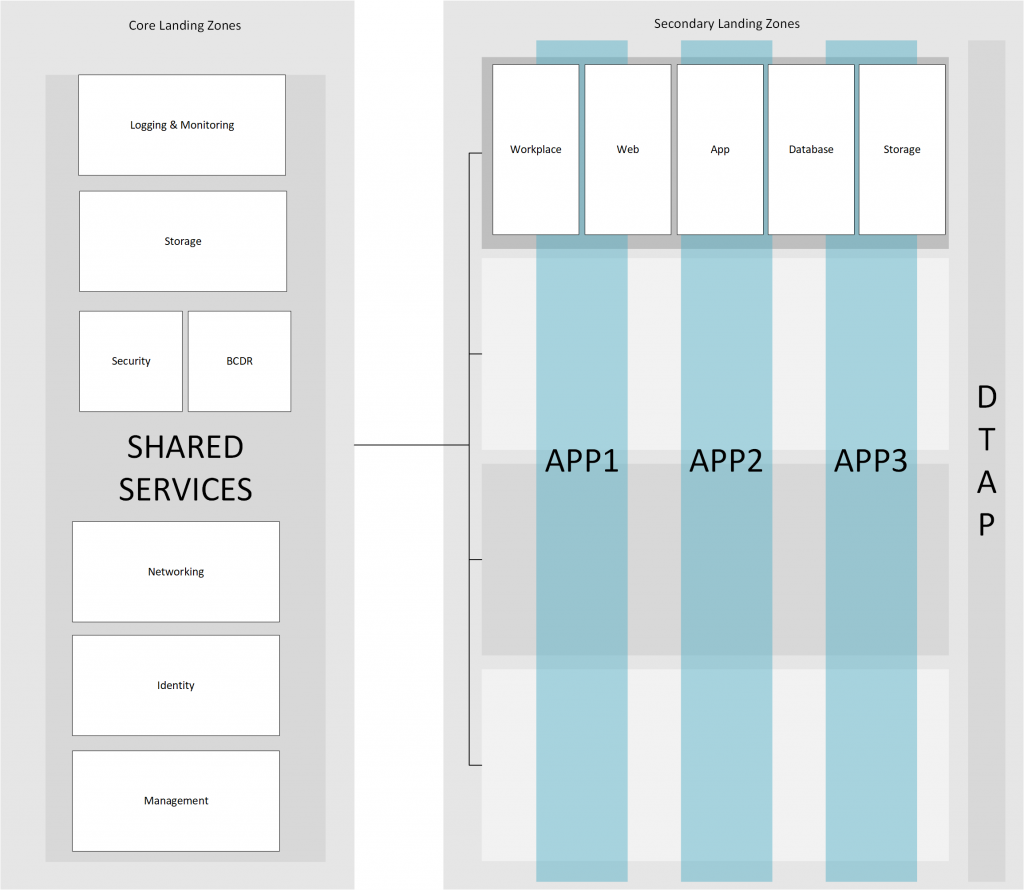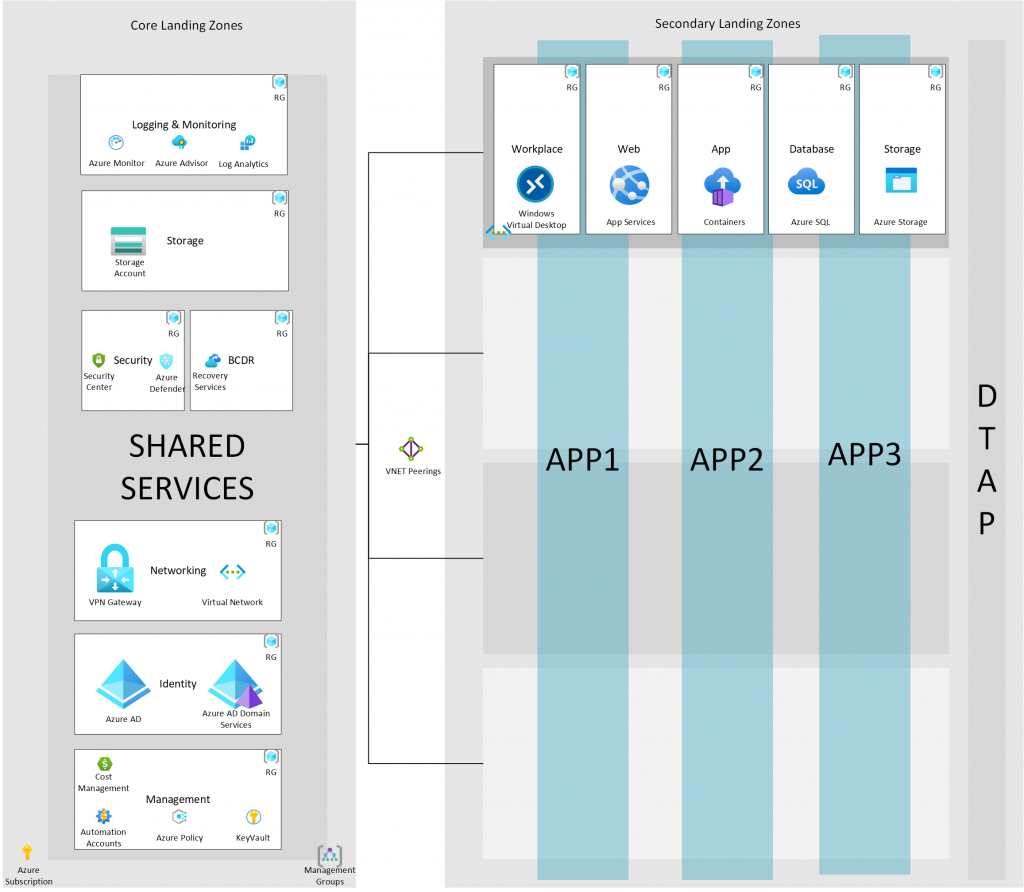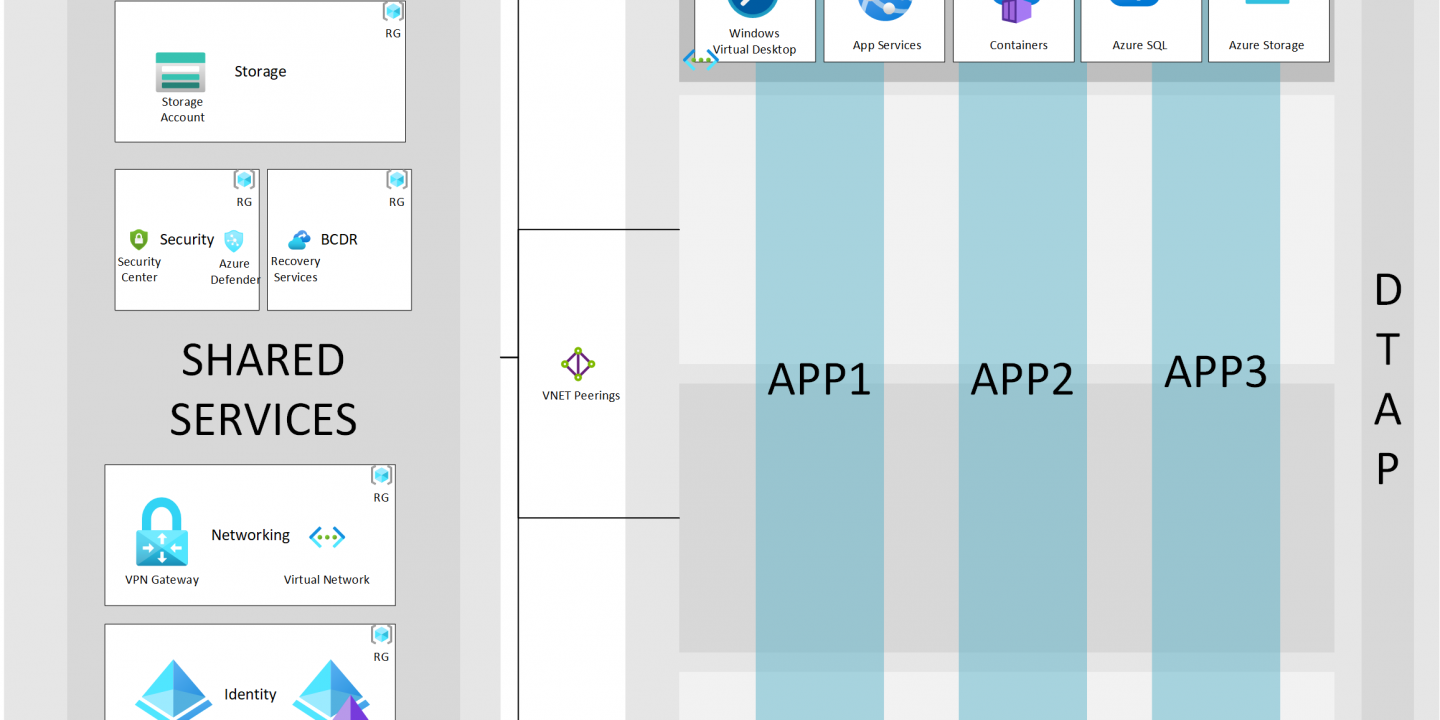This blog-post will be part of a series of CAF Landing Zones for SMB and ISV blog posts.
In this series of posts, we will be referring to the Enterprise-Scale Landing Zone framework provided by Microsoft. However, we will be taking a side road on this framework.
Reason
The reason why I want to provide you with a more practical and hands-on approach to the Cloud Adoption Framework and corresponding Landing Zones is that not every organization is considered an Enterprise or Corporate. The majority of organizations that are in the process of Cloud adoption can be categorized as startups, SMB, or ISV’s. Microsoft does provide some pre-designed landing zones to be able to start small and expand, but please bear in mind that these require some customization as well, and some services might not be required if you are a startup or SMB.
Looking at the scale of this last group of organizations, the Enterprise-Scale landing zones should be looked at as a reference but reviewed granularly to meet the needs of the non-enterprise/corporate organizations.
Landing Zones for SMB and ISV
The main goal of implementing cloud landing zones for SMB and ISV is to be able to deploy, manage, update and scale your Azure resources securely and properly.
When looking at AzOps and AzSec we are striving to build an operational and security model that fits the customers’ needs and wishes, which can still provide the promised scalability, flexibility, and cloud optimization benefits. AzOps and AzSec should play a supporting role in the application landscape
Taking into account the perspective of DevOps and DevSecOps the VDC should facilitate the application development team to perform CI/CD in a way that the entire IT infrastructure which is oriented around your Line-of-business applications closes the gap between the operations and deployment lifecycle.
Why should a Cloud Adoption Framework matter to you?
If Enterprise-scale landing zones feel like a large overhead for your organization then the following blog-post series will hopefully provide you with a more hands-on approach.
Planning Cloud Adoption is key, we’ve often seen Cloud environments that have been set up with no clear vision of the future application and IT landscape, which ended up consuming a lot of money that could’ve been spent more wisely.
On your road to onboarding IaaS, PaaS, and SaaS the Cloud Adoption Landing Zones for SMB and ISV can be your hitchhikers guide to the galaxy.
Let’s translate this into practice
To layout a strong foundation, we’ve distinguished the following core landing zones for.
- Core Landing Zones
- Identity
- Management
- Security
- Networking
- Storage
- Business Continuity & Disaster Recovery
- Logging & Monitoring
- Secondary Landing Zones
- Workplace
- Web
- Application
- Database

The above overview provides you with a holistic view of the landing zones for SMB and ISV organizations. The overview below provides you with a detailed overview of services that will land in their corresponding landing zone.

As you can see, these landing zones can be very versatile, depending on the services that you require. The final goal of this landing zone proposal for SMB and ISV organizations is to give you the foundational building blocks for a future-proof Cloud Architecture.
Next steps?
In the upcoming blog-posts, we will be going into more detail on how we set up the actual Azure Structure and have a look at naming convention & governance as a starting point.
Thank you!
Thank you for reading through this blog post, I hope you liked the introduction, and sort of know where we are working towards in this blog post series.
If you encounter any new insights, feel free to drop me a comment or contact me via mail or other social media channels

